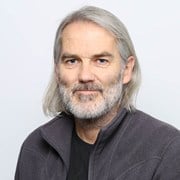Norwegian foreign aid is funding a lot of good work. However, current aid funding has only been of limited help to low-income countries in their battles to combat the global crises that threaten them much more than they impact on us. Such crises include major challenges linked to climate change, biodiversity loss, poverty and food security, all of which were discussed at the UN summit this autumn.
Sadly, Norway’s efforts have been rather fragmented. While some projects focus on higher education, others are designed to consolidate civil society. There are many others like them.
However, many low-profile Norwegian aid projects have demonstrated that more holistic approaches have the potential to promote innovative solutions, not least in the energy sector. Such innovations are helping towards resolving global problems and, at the same time, creating jobs and revenues in low-income countries.
Long-term partnerships across the North-South divide
The key to all this has been the long-term partnerships developed across the global North-South divide between businesses, the research community and the public authorities.
Such partnerships have brought together specialists in applied technology research here in Norway with local experts in the global south and east. That is to say, specialists who are familiar with the needs and challenges of recipient countries at all stages in the relevant value chains, including raw materials procurement, processing, supply, marketing, customer support, waste management and recycling.
The innovation apparatus operating in Norway and the rest of Europe is firmly grounded in collaborations between technologists and experts in analysing needs, opportunities and threats. Dedicated mechanisms have been developed for this purpose. So, why not make this toolbox available to those working with Norwegian aid projects?
More hydropower – and less uncontrolled plastic waste
The rewards that Norway has helped to reap by working in this way range from the development of hydropower turbines that can operate effectively in sand-bearing rivers, to cement furnaces that can help to put the brakes on uncontrolled global plastic waste pollution.
For more than forty years, the Norwegian Foreign Ministry has been working with Nepal to promote higher education in the fields of energy and the environment.
Since 2002, more than 20 Nepali students have been awarded doctorates in engineering, and more than 300 bachelor’s and master’s degrees have been granted as part of these programmes. Today, the majority of these graduates are working in Nepal.
Turbines adapted to Himalayan conditions
Initially, the programmes were entirely linked to applied research being carried out at NTNU and SINTEF. Today, however, the majority of these Nepali students study at the University of Kathmandu. The university has expanded its resources in support of education and applied research as a result of its collaboration with Norway, which has now developed into a partnership.
Access to research funding, subject to tender, has enabled new engineering graduates to develop innovations that have been crucial for start-up companies in Nepal.
One of the new companies is designing hydropower turbines that are resilient to Himalayan sand-bearing river water to a much greater degree than other turbines. This offers opportunities for the development of more hydropower per Norwegian krone in investment in a region where the vast majority of the population receive only low incomes.
LED lamps and carbonisation furnaces
Another company has developed energy-saving LED lamps for applications such as street lighting.
A third is manufacturing portable carbonisation furnaces that households use to make charcoal for cooking, offering them an alternative to unhealthy, smoky, food preparation indoors. Any surplus charcoal is sold to brick manufacturers.
A green goldmine for local cement manufacturers
At the same time, SINTEF has been showing some Asian countries that non-recyclable plastics recovered from overflowing waste tips may represent a green goldmine for local cement manufacturers.
Plastic offers more energy than coal. Substituting coal with non-recyclable plastics in cement manufacture enables us to resolve two problems. Firstly, we avoid sending the plastic to landfill and we prevent it from polluting the oceans. Secondly, we reduce coal consumption and therefore also our CO2 emissions.
It is now common in Europe to burn waste materials as a fuel in cement production. SINTEF is currently using funds from the Foreign Ministry to assist the cement manufacturing sectors in India, China, Thailand and Vietnam with the aim of introducing the concept to the Global South as well.
Long-term funding generates durable partnerships
It all started with a project focusing on hazardous waste. In Europe it has been considered safe for many years to incinerate this kind of waste in cement furnaces.
In China, however, this concept was unknown right up until the time when SINTEF was given the opportunity to demonstrate the potential of the approach to the Chinese cement sector and public authorities. As a result of this initiative, the method has now been in use in China for some years.
For many years, all of these activities have been in receipt of funding from the Norwegian embassies and the Norwegian Agency for Development Cooperation (Norad). Long-term thinking has helped to generate durable partnerships between technical specialists in both Norway and the recipient countries. A long-term perspective is important when innovation is to take place across national and cultural boundaries.
Global benefits
The aid that the world is currently giving is far from adequate in terms of meeting the challenges currently facing the Global South. For this reason, it is even more important that the funding that is available is being spent effectively and is promoting permanent change.
To make this happen, development cannot simply be another item in our national budgets. What we need now are strategies for the establishment of green innovation partnerships that will benefit both parties.
If we achieve this, there will be benefits for everyone living on our shared planet. As the UN General Secretary said during the most recent Climate Change Summit: “Humanity must choose: co-operate or die!”
This article was first published in the engineering periodical Teknisk Ukeblad on 23 October 2023 and is reprinted here with the permission of the magazine.





